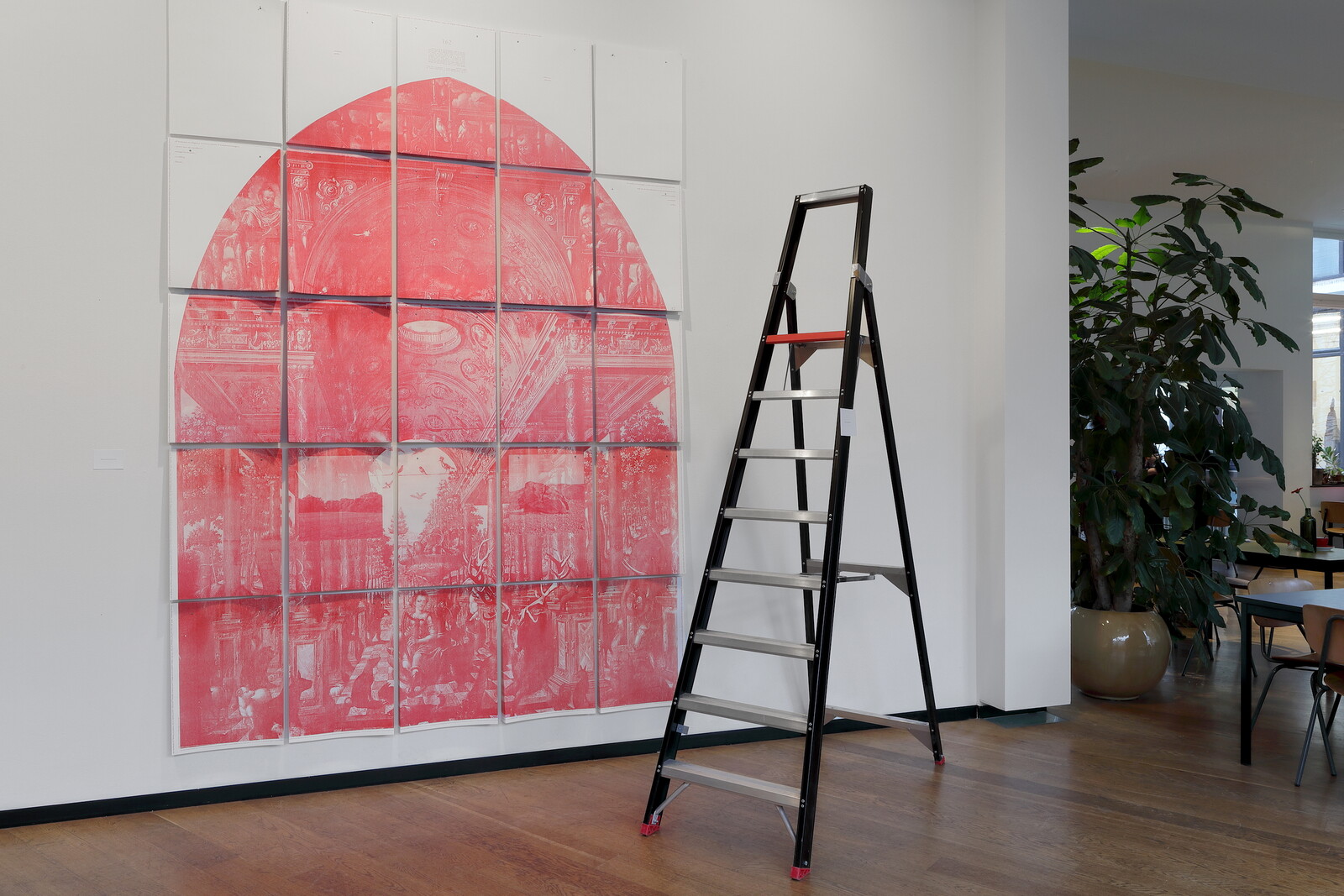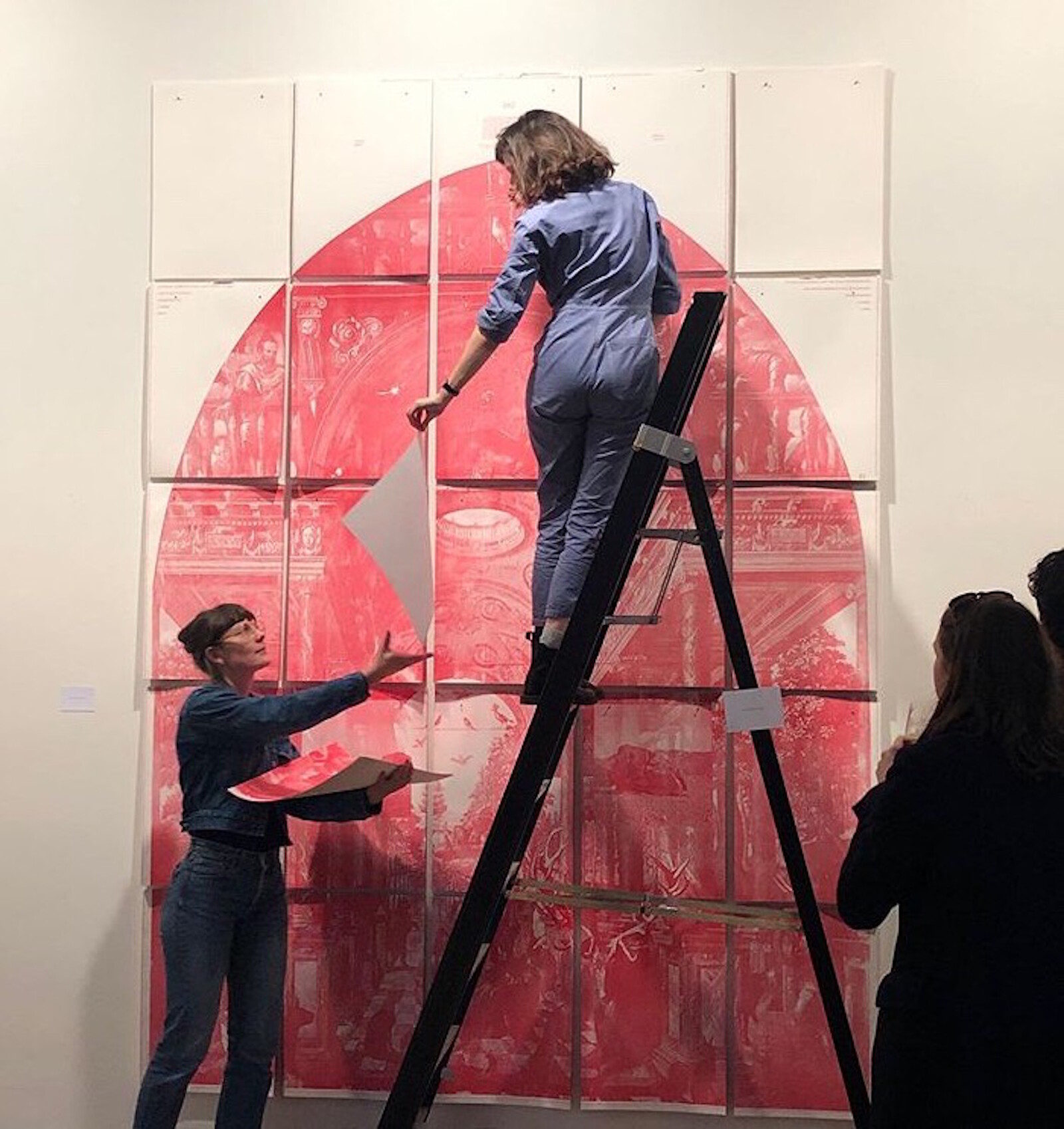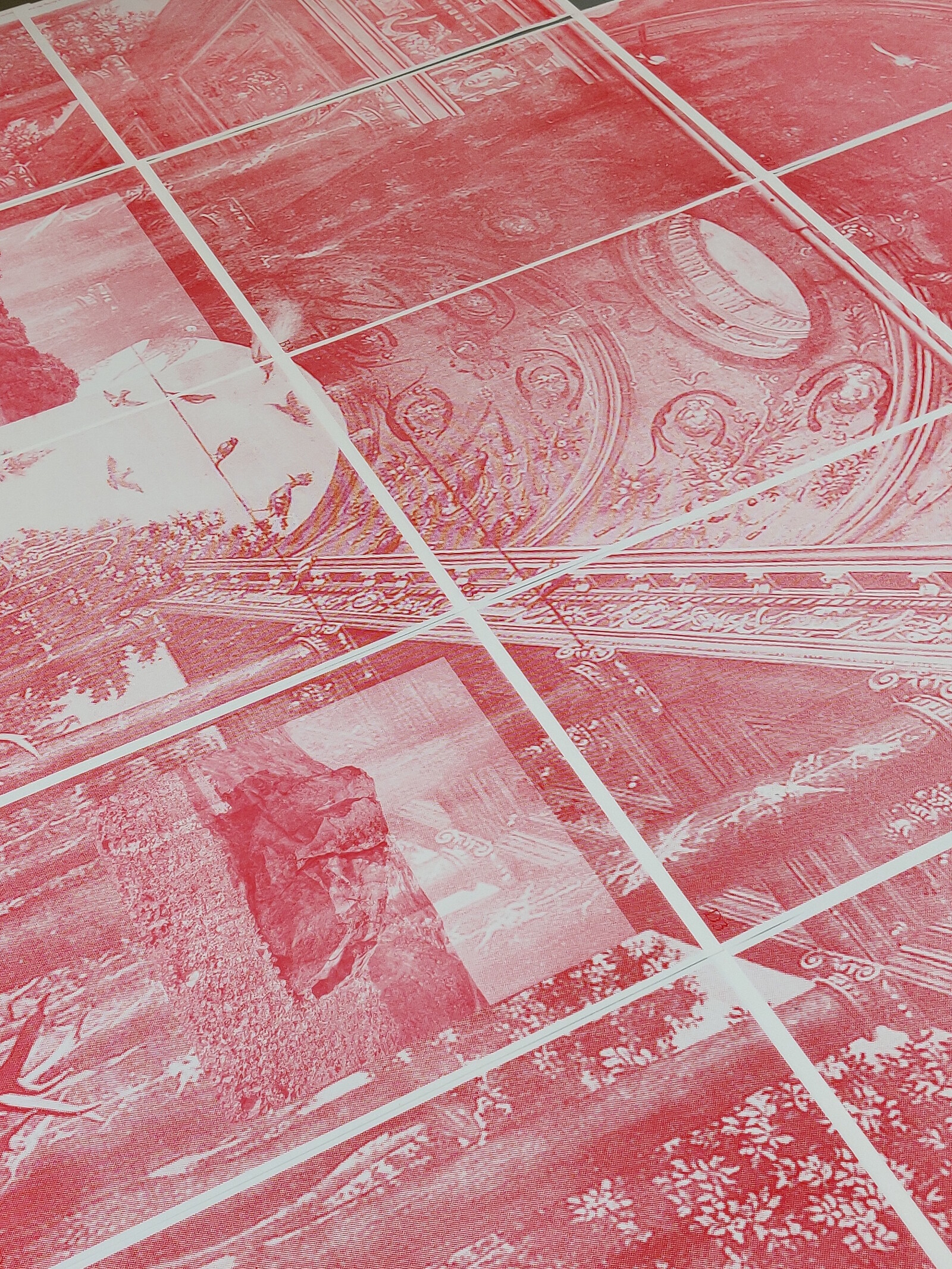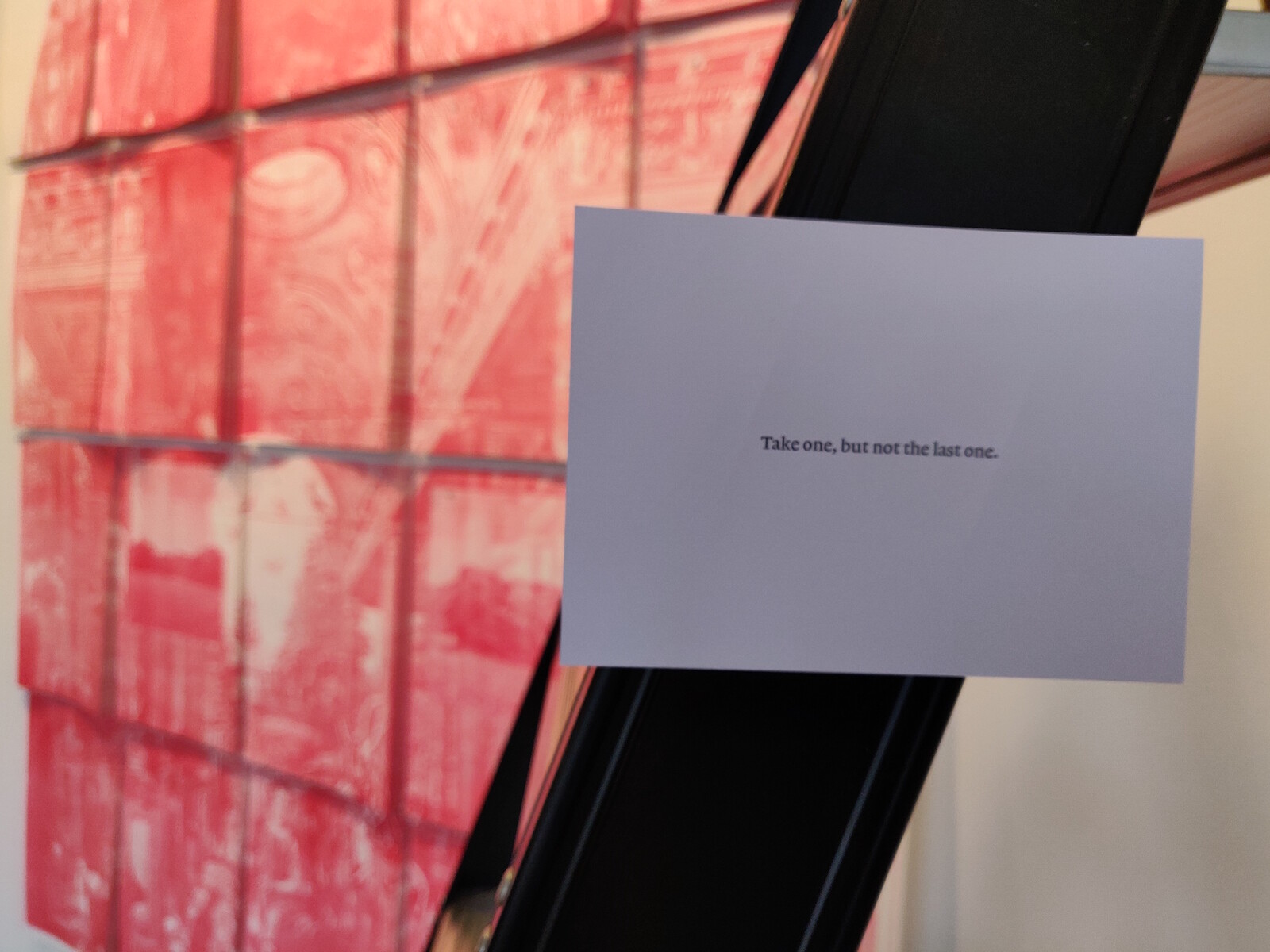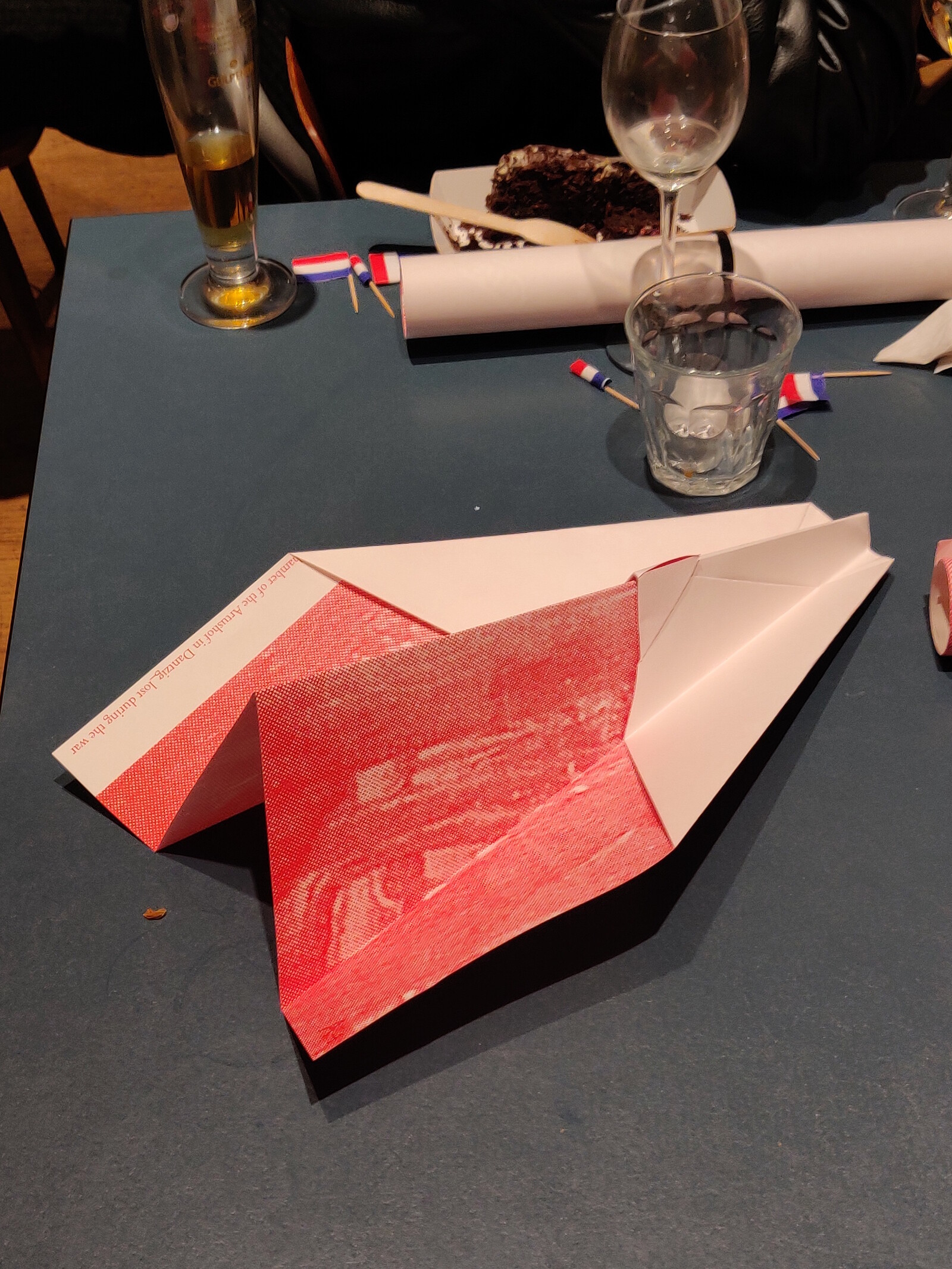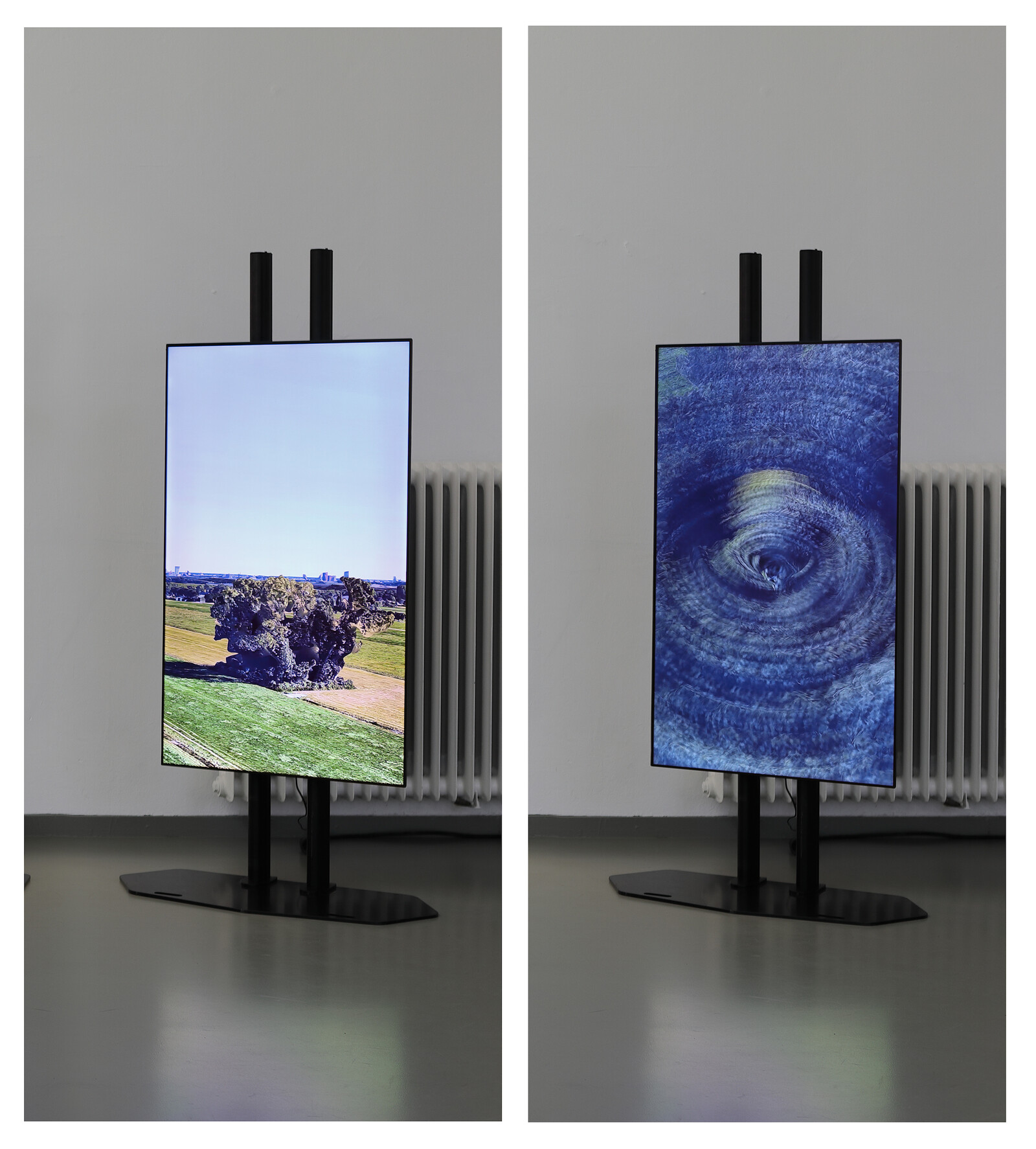Antonio Bermúdez Obregón is an artist and architect whose work is about the ways in which representations of nature are shaped by a desire to manage it and contain its threat. We met over the course of our respective residencies at the Jan van Eyck Academie in Maastricht, and I invited him to contribute to the exhibition I curated for the Jan van Eyck’s Open Studios, entitled “The Wall at the End of the Rainbow.” It opened on March 5, just as the borders started closing.
His contribution, Obedience, was a to-scale reproduction of Hans and Paul Vredeman de Vries’s sixteenth-century painting Orpheus Playing for the Animals, which went missing in 1944. In English, the painting is known by an alternate title: Orpheus playing the lyre: trees and rocks move, beasts and birds are enchanted, which also accurately describes what is taking place in the image.1 This enchantment is framed by an architectural folly, under an ornate domed roof upheld by marble pillars that visually overwhelms the birds and the trees of the garden. Bermúdez Obregón’s Obedience reproduces the painting in red monochrome on 25 blocks of riso-printed paper. Visitors were invited to tear sheets of paper off the wall and keep them, to participate in the image’s deconstruction and dissemination. Immediately following Open Studios, the residents at the Jan Van Eyck dispersed: Antonio returned to Colombia, and lent me the house he had been living in so that I could quarantine safely in Maastricht.
The following conversation takes for its starting point this project, currently installed in the locked building of the Jan van Eyck, and moves into a discussion of colonial interventions in nature, the semiotic function of gardens, and what it means to manage wilderness.
Natasha Marie Llorens: I am in the Netherlands, in your house and garden. Tell me about where you are.
Antonio Bermúdez Obregón: I am at home, in Bogotá. I’ve been using my quarantined afternoons to scan negatives and organize my photographic archive. I use photography to gather signs of the built environment. Landscape as a human creation is full of “manners” or elements made to give the impression of otherness.
NML: What is otherness here? Elements that are meant to represent humanity’s separation or distance from the natural world?
ABO: The idea of landscape being “mannerist” is an extrapolation of Robert Venturi and Denise Scott Brown’s ideas on “mannerist” architecture. A “manner” is a fake window used to make a shed look like a building, or a useless column placed on a facade to produce the effect of symmetry. In the same way, “manners” erected on the landscape indicate displacement, and displacement is otherness.
For example, the mountains that I can see from my window in Bogotá were planted with pine trees at the beginning of the twentieth century to make them look like the Alps. In Colombia, every 100 meters you go down the mountain, the temperature rises 1°C. Spanish colonial chroniclers used to call the lower regions something like “lands of low morality and impure fumes,” so the colonizers built Bogotá in the cooler range, about 2,600 meters above sea level, and brought with them an “ideal landscape” for pure Christians to settle. It’s a double displacement.
These kinds of elements represent humanity’s separation from the natural world, giving away what is secretly artificial or falsely natural. I think almost every manmade object—from a skyscraper to a fork—confirms the distance between humans and nature.
NML: Which elements of nature are deployed as signs in the original painting, Orpheus Playing for the Animals? In your view, why were they included? And what happens to these signs, in light of your idea about displacement?
ABO: In the original, every natural element is a sign to indicate the presence of something else. Taken together, these signs indicate the presence of everything else, or the idea of totality. This is a colonial attitude to recomposing the world. It’s how a zoo is conceived, or a colonial exhibition. The lion and the deer are shown living quietly side by side, arranged by some kind of infrastructure that, in this case, according to myth and the painting’s title, is Orpheus’s music.
In Obedience there are two grids. One is represented (reproduced from the original painting), and the other is part of the format of my installation. The first symbolizes Orpheus’s music: it is the architecture of the painting, the infrastructure into which all the natural elements are placed. The second, real one is the grid made of blocks of paper that, as you said, breaks the painting apart.
When I impose this grid onto the painting and allow members of the public to take it apart, I repeat the displacement enacted by Hans and Paul Vredeman de Vries when they took these signs from their natural habitat. I put ideas on the table, so to speak: availability, dis-aggregation, extraction, displacement, selection, reduction.
This real grid can also be read as a survey handed out to the audience. The first sections of paper to be removed corresponded to objects that can be isolated without losing their identity or becoming abstract: the deer, the bird, the elephant, Orpheus… When something can be named and marked off, it becomes available, and can be taken. That’s how we colonize, control, represent, and create nature.
NML: What is the difference between the fact that humans displace objects and the fact that they displace signs? What is the difference, for you, between the pine tree as a tree and the pine tree as a sign of aspirational Eurocentrism? I ask because I think this gets to the heart of your act of deconstruction in Obedience.
ABO: I want to point out a beautiful ambiguity in the word “sign.” A sign can indicate the probable presence of something else, but can also be defined as an action or way to convey information. These two definitions are not exclusive. The pine tree is both. The difference between the pine tree as a tree and the pine tree as a sign is also that which differentiates the wilderness from the garden. Displacement transforms a tree into a sign, whether by human intent or not, and displacement also transforms wilderness into a garden.
A garden is a place, enclosed and marked off, into which you import specific elements and lay them out according to an infrastructure in order to represent the totality of the world. Bringing elements into this secluded space is an act of displacement, but it is also an act of placement. That’s the beauty of the word; you cannot displace without placing. This word states that everything has to be either founded or rooted somewhere.
NML: Yes, but isn’t there a difference between a “real” garden and the idea of a garden that is meant to represent the order of the world?
ABO: In all traditions, gardens appear as a scaled representation of the world. Imaginaries are created through the construction of living scenes. The garden is real, and at the same time it is a representation of alterity.
There is a legend I love about a giant carpet, 50 meters long by 25 meters wide, named Spring of Khosrow. Produced with silk, gold, pearls, and jewels, it was made for a Persian king as a one-to-one scale garden inside his palace. After the invasion of Ctesiphon by the Arabs, the carpet made was cut into small pieces and distributed as war plunder. This was the point of departure for Obedience.
NML: When I asked you what Obedience was, you told me it was a garden. Something that was real, but also a representation of alterity. You also spoke to me about carpets as something different: they don’t flower or wither or grow feral, but exist as a representation of alterity.
Through its scale, Spring of Khosrow crossed the boundary between representation of the garden and the real thing. And then a war came, and then the carpet was reduced in the minds of the victors to its “real” value, or at least it was broken back down into recognizable carpet-sized representations of alterity. It lost its ambivalent relationship to the real when it lost its total view.
ABO: I like the idea that the fragments of Spring of Khosrow become feral again in their isolation: they run free from the organizing infrastructure. It makes me think about what composition means in painting and what decomposition means in nature. I love when a part of the image is de-contextualized. It decomposes like an organic body and loses its shape, direction, signs and meanings.
The carpet, as you say, fell from grace. First it was butchered, and then it probably decomposed because of the high value of its materials. Threads of gold melted and sold, pearls and gems sold and transformed.
NML: I see both as a semiotic short-circuit: in both the story of Spring of Khosrow and in your work Obedience, the act of mastery through representation is shattered and then disseminated through its repetition. Nature becomes a garden, the garden becomes a carpet/painting, the carpet/painting is overlaid by a grid, the grid disperses into fragments. Those fragments fall off the grid, get lodged in people’s storage units, and in the trunks of cars, and pinned up on studio walls or framed in living rooms in Rotterdam, Brussels, and Aachen. They become feral once more.
ABO: Feral myths framing nature have always been located in the dark spots of our perception. I’m talking about all the creatures that are hidden by the darkness of the forest, the depth of the sea, in outer space or inside our bodies. I’m talking also about invisible moments like unpredictable events, volcanic eruptions, earthquakes, storms… Pandemic is fascinating because it is at the same time a global event and a creature inside our bodies—and the virus has been represented at both scales, as data maps and graphics and as an unscrupulous small creature.
NML: Anna Tsing has suggested that we need to develop tools to conceptualize the Anthropocene in terms of the interaction between infrastructures (imperial, colonial, capitalist) and feral spaces, or spaces that were not conceived of by a plan, but which nevertheless constantly interact with planned systems. 2 The Zone of Alienation around the Chernobyl site, the macro and micro spaces that COVID-19 opens up in our day-to-day and in the landscape of our cities.
ABO: The foundational myths of almost all cultures have a binary structure defining a known world and an unknown one, and it’s always a visual matter. The land of the turtle is the region illuminated by the lighthouse of language and knowledge, while the land of the wild ox is all the darkness around it. 3
Wilderness was hard to find in The Netherlands. Long before the pandemic, I was fascinated by elements of the historical landscape that have been used since the seventeenth century to bury and isolate cattle during outbreaks of infectious diseases and plague epidemics. Pestbosjes, Dutch for pest-groves, are small wooded areas, enclosed by a ditch to isolate sick and dead cattle from the healthy ones. These places usually looked like islands in the middle of fields, at the farthest possible point from houses and roads. Today, people still fear these places because of anthrax bacteria that can live underground and remain infectious for more than 150 years. The invisible enemy could be present in these feral islands, so while children won’t approach them, birds and insects use them as ecological bridges. These sites remain: enclosed pieces of wilderness which contain all the myths and fear that should be in the darkness of the land of the wild ox.
A large proportion of The Netherlands exists as a public 3D model on Google Maps. Because of the density and the suburban nature of the country, even rural areas are modeled. In this digital simulation of the world, pestbosjes look like solid objects, more like rocks with caves that agglomerations of trees. You can fly over each one like a bird, but if you run through the digital landscape, you collide with its limits instead of going inside or through it. I presented a project based on this research, also entitled Pestbosje, at the Jan van Eyck’s Open Studios. The work comprises a two-channel video depicting a virtual scan of each item out of an inventory of pest-groves. The scans are recorded while navigating across the Google Maps’ 3D model.
In the midst of this pandemic, limits are being drawn by that which is invisible. Fences and walls seem suddenly outdated. What is really enclosing the garden is not the wall but the fear of a lingering and invisible threat.
This idea comes from Anna Tsing’s keynote lecture at the Art of the Anthropocene conference at Trinity College, Dublin in June 2019, at which she spoke about the ongoing Feral Atlas project. Thank you to Jorgge Menna Berrato for the reference.
This is a reference to the land of the Hippotragus from a foundational myth of the African tribe of Fali. See: Françoise Paul-Lévy & Marion Segaud, Anthropologie de l’espace (Paris: Centre Georges Pompidou, 1983)
